#tsv in munich
Text

[160324 tsv ig story]
6 notes
·
View notes
Text

Bundeslihaha: Lautern x Sechzig
I've never posted Kaiserslautern's new design on the blog since I created it in 2017, so I'll do it now, in honor of him reaching the DFB Cup final as a 2. Bundesliga club❤️ It's so impressive and awesome! :D 🤍
#fchumans#bundesliga#bundeslihaha#kaiserslautern#1. fc kaiserslautern#1 fc kaiserslautern#personification#fc humans#2. bundesliga#bundesliga 2#tsv 1860 munich#tsv 1860#1860 münchen#tsv 1860 münchen#1860 munich#football#soccer#gijinka#art#digital art#sechlau
2 notes
·
View notes
Text
Born on this day: Thomas Müller (13.09.1989)


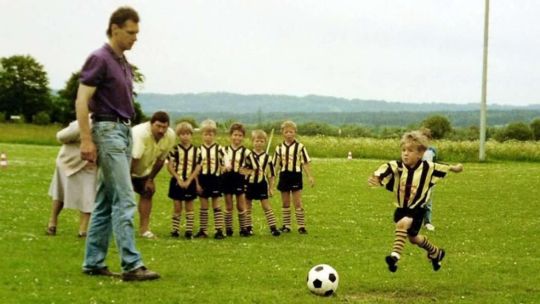

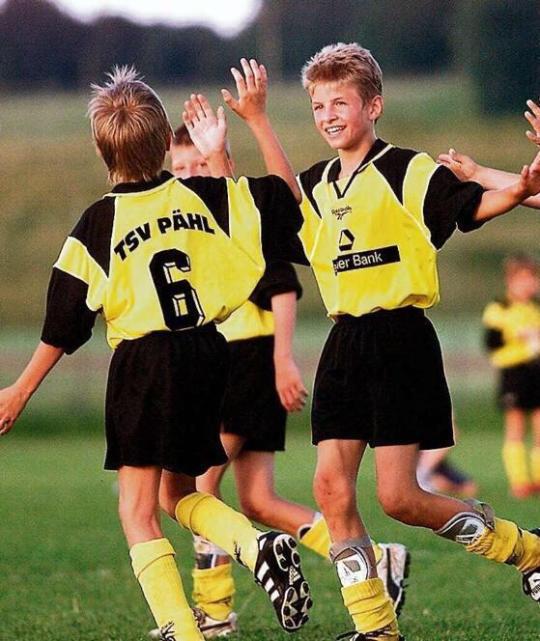

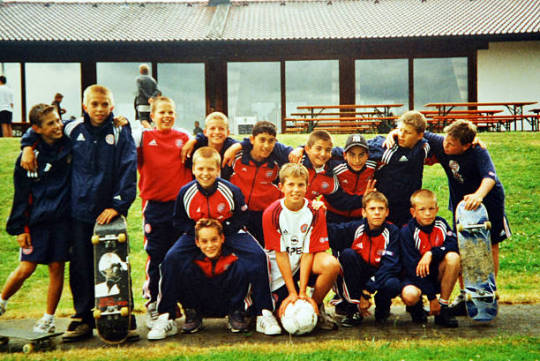






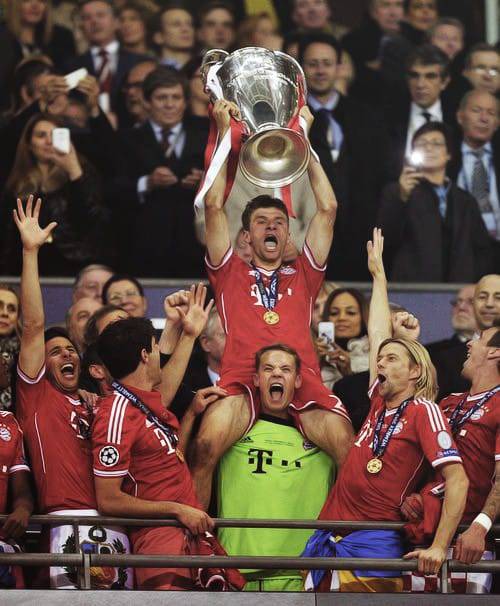




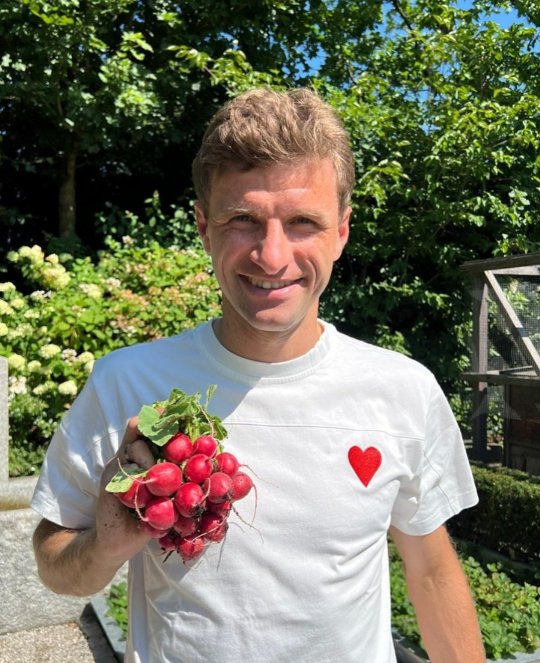


#Thomas Müller#Der Raumdeuter#born on this day#BOTD#TSV Pähl#FC Bayern#Bayern Munchen#bayern munich#Germany NT#die mannschaft#football#fußball#fussball#foot#fodbod#futbol#futebol#soccer#calcio
55 notes
·
View notes
Text
THIS DAY IN GAY HISTORY
based on: The White Crane Institute's 'Gay Wisdom', Gay Birthdays, Gay For Today, Famous GLBT, glbt-Gay Encylopedia, Today in Gay History, Wikipedia, and more … March 8



Radcliffe-Hall & Lady Troubridge
1887 – The British sculptor and translator Una Vincenzo, aka Lady Troubridge was born on this date (d. 1963). Born Margot Elena Gertrude Taylor, she is best known as the long-time partner (28 years) of Marguerite "John" Radclyffe-Hall, the author of The Well of Loneliness. She married Admiral Ernest Thomas Troubridge in 1908 and gained her title when Admiral Troubridge was knighted in 1919.
Troubridge was an educated woman who had many achievements in her own right. Most notably she was a successful translator and introduced the French writer Colette to English readers. Her talent as a sculptor prompted Nijinsky to sit for her several times.
Troubridge met Hall in 1915 as Troubridge was the cousin of singer Mabel Batten who was Hall's lover at the time. Mabel died in 1916, and Hall and Troubridge moved in together the following year. Troubridge wrote about the intensity of their relationship in her diary: "I could not, having come to know her, imagine life without her."
Both Troubridge and Hall identified as 'inverts', a term used by sexologists such as Krafft-Ebing and Havelock Ellis usually to connote what we now think of as homosexuality. Hall and Troubridge raised and showed dachshunds and griffons. The dachshunds shown in the Romaine Brooks portrait of Troubridge (above) were a prize winning pair given to her by Hall.


1900 – Otto Peltzer (d.1970) was a German middle distance runner who set world records in the 1920s. Over the 800m Peltzer improved Ted Meredith's long-standing record by 0.3 seconds to 1:51.6 min in London in July 1926. Over the 1000m he set a world record of 2:25.8 in Paris in July 1927, and over 1500 m Peltzer broke Paavo Nurmi's world record (3:52.6) and set a new one at 3:51.0 in Berlin in September 1926. Peltzer was the only athlete to have held the 800m and the 1500m world records simultaneously, until Sebastian Coe matched the feat over fifty years later.
Born in Ellernbrook-Drage in Holstein, Peltzer overcame childhood ill-health to become a successful athlete, winning his first German championship at age twenty-two. He started university in Munich in 1918, joining the TSV 1860 club, where he was nicknamed "Otto der Seltsame" (Otto the Strange). He continued in Munich, receiving his doctorate in 1925. In 1926 he was one of a group of German athletes invited to the AAA Championships at Stamford Bridge stadium in London, where he won the 800m, beating Britain's Douglas Lowe, who had won the event at the 1924 Olympic Games which, along with the 1920 Games, Germany had been barred from entering. In 1926, a specially arranged 1500m race between Peltzer, Paavo Nurmi of Finland, Edvin Wide of Sweden and Herbert Bocher of Germany took place in Berlin which was won by Peltzer in a new world record time.
Shortly before the 1928 Olympic Games in Amsterdam, to which German athletes were again allowed to enter with Peltzer elected as team leader, Peltzer was injured in an accident while playing handball. Although he recovered enough to take part in the 800m heats, he failed to qualify for the final. In 1932 he was team captain, but poor arrangements left the German team trying to run with spiked shoes on the hard Olympic track. Peltzer made the final, but did not finish.
Peltzer was often persecuted for his homosexuality.In 1933 he joined the Nazi Party and the SS. However, in June 1935 he was sentenced to 18 months imprisonment for 'homosexual offences with youths'. He was released early on condition that he would end his involvement in sport, but was rearrested in 1937. After spending time in Denmark, Finland (where he slept rough and contracted bronchitis) and Sweden, he returned to Germany in 1941 having been assured that the charges against him would be dropped. However, he was arrested and sent to KZ Mauthausen, where he remained until the camp was liberated on 5 May 1945.
With homosexuality remaining a criminal offence in 1950s Germany, and Peltzer in conflict with the German Athletic Association (DLV), Peltzer's opportunities to coach athletics were limited in Germany. He obtained a commission from a German newspaper to report on the Melbourne Olympics, and after the Games tried unsuccessfully to get work with various national athletics organisations. He eventually came to India, coaching in the national athletics stadium in New Delhi, and founded the Olympic Youth Delhi club, later renamed the Otto Peltzer Memorial Athletic Club in his honour.
Following a heart attack in 1967, Peltzer was persuaded to return to Germany, and was treated in hospital in Holstein. After attending an athletics meeting in Eutin, Schleswig-Holstein, Peltzer collapsed and was found dead on a path towards the car park.


1929 – American poet, publisher, essayist and photographer Jonathan Williams was born (d. 2008). Williams was the author of more than a hundred books and booklets of gay poetry that merges flesh and spirit with a sense of history.
Williams was born in Asheville, North Carolina, and educated at St. Alban's School in Washington and at Princeton University. His real education, however, began at Black Mountain College (1951-1956), where he met Charles Olson and, in company with another gay poet, Robert Duncan, took on Ezra Pound's lesson of compact speech and William Carlos Williams' maxim "no ideas but in things."
Jonathan Williams has been described as a cross "between Richard Pryor and the Roman poet Martial." Indeed, his poetic reception has suffered from his refusal to keep the flesh and the spirit separate.
Either he is criticized by the traditional straight world for lowering poetic tone or ignored by the gay world, both for seeing the raunchiness of our world in classical terms and for having a sense of history. For him Zeus is a randy old-goat tourist snatching up the local Ganymede trade, and Catullus is familiar with jock straps.
"I haven't seen the territory yet that can't be sexualized or examined for its poetic cuisine, or its birds, or for its dialects," Williams wrote. In one of his collections, Quantulumcumque (1991) (the word means "as much as can be said in a small space"), is an epigram of a modern hustler that reappropriates classical epigram form:
Donnie
pocket full of green
bottom full of cum
But he was also concerned with feeling--with getting beyond what he called the verbal and imaginative penury of "hardcornponeography." What he imagined best was the hard-on longing for it of country boys wild for passion.
He also wrote a fine sequence based on the fears and failings of the men interviewed by Havelock Ellis and a beautiful love poem ("Lexington Nocturne"), in which he lets his hand hang for a moment in the hair of his as-yet-unseduced bedmate and concludes "let that be all / for then."
Williams was a pathologist of the ordinary, listening to the quirks and privacies of speech as they reveal character. Many of his poems sound like (and were) overheards:
i hear you do
not care greatly for
the fair sex the
fair sex he snapped
back which is that
Along with his lover, the accomplished poet, Tom Meyer, Williams kept busy running Jargon Press, which has been responsible for publishing a number of gay poets—James Broughton, Robert Duncan, Harold Norse, and Paul Metcalf among them.
Some of his essays and reviews have been collected in The Magpie's Bagpipe (1982), but much of his liveliest work still remains uncollected in the annual collections of squibs and ripostes that he sent out to friends.
If he had failings, they were the result of his being too large, of embracing multitudes, as Whitman would put it. His bibliography extends to more than a hundred books and booklets as well as many other publications. It would be hard to think of any one person who did more for poetry, gay and straight, in America.
Williams died on March 16, 2008 in Highlands, North Carolina. He was survived by Meyer, his companion for more than 40 years.


1963 – Jim Nelson was editor-in-chief of the magazine GQ.
Nelson began his journalism career in television, first working as a producer and writer at CNN and later moving to Hollywood where he worked briefly as a writer's assistant on television sitcoms.
He made the shift to magazines at age thirty, starting with an internship at Harper's Magazine, From 1994 to 1997 Nelson was an editor at Harper’s Magazine under Lewis Lapham, where he was responsible for the magazine’s Readings section. His writing has also appeared in The New York Times Magazine, Gourmet, and Food & Wine.
Nelson had been editor-in-chief of GQ since March 2003. He retired from that post at the end of 2018. Nelson joined the magazine as a senior editor in 1997, editing the work of such writers as Andrew Corsello, Elizabeth Gilbert, Charles Bowden, and Michael Paterniti. After working under Art Cooper as an executive editor, Nelson was appointed by Condé Nast to replace him as editor-in-chief in 2003.
Under his direction, the magazine has been nominated for sixty-two National Magazine Awards and has won for feature writing, reporting, design, photography, and general excellence, the highest honor in the industry. His own writing for GQ was cited in The Best American Sports Writing 2001.
Also during Nelson’s time at GQ, the magazine has been nominated for forty-one James Beard Awards and has won for restaurant reviews and critiques, distinguished food writing, writing on wine spirits or beer, and humor. In 2016 The Daily Front Row’s fourth annual Fashion and Media Awards honored Jim Nelson with the Magazine of the Year award for GQ.
Most recently Nelson launched ‘The Closer with Keith Olbermann,’ a twice-weekly web series offering political commentary on the 2016 election and other timely news topics. After garnering more than 75 million views[14] for ‘The Closer,’ Olbermann returned with a post-election series on GQ.com called ‘The Resistance’ where he continues the conversation about the President elect.Additionally, during Nelson’s time at the magazine, a number of GQ stories have become both small and large-scale film productions and TV series, including Concussion starring Will Smith, the Netflix series Last Chance U and the forthcoming film Granite Mountain.
He resides in Brooklyn with his partner, John Mario Sevilla, a dancer and choreographer.

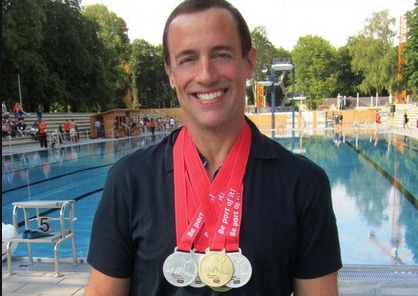
1963 – Bruce Hayes is an American former competition swimmer best known for anchoring the U.S. men's 4x200-meter freestyle relay team that won the gold medal at the 1984 Summer Olympics in Los Angeles.
A native of Sarasota, Florida, Hayes' success as a Texas age group and high school swimmer earned him a full scholarship to University of California, Los Angeles (UCLA). He was the highest scoring freshman at the 1982 NCAA Men's Swimming and Diving Championships, helping the UCLA Bruins win the national team championship.
Hayes represented the United States in several international swimming meets. His first national and international titles came in 1983. He won seven medals at the 1983 World University Games in Edmonton - the most by any American swimmer - and his win in the 200-meter freestyle was the only U.S. gold. A few weeks later, he won the 200-meter freestyle at the 1983 summer United States Swimming Championships.
At the 1983 Pan American Games in Caracas, Venezuela, Hayes won three gold medals in the 200-meter and 400-meter freestyle races and in the 4x200-meter freestyle relay. He also collected three gold medals at the 1983 Descente International Invitational Swim Meet in Tokyo in the same three events.
Hayes won the 400-meter freestyle race at the 1984 winter United States Swimming Championships for his second national title. He finished third in the 200-meter freestyle at the 1984 United States Olympic Swimming Trials, qualifying him for a place on the 4x200-meter freestyle relay team in Los Angeles.
Hayes captured one more national title before retiring when he won the 200-meter freestyle at the 1984 summer United States Swimming Championships, held after the Olympics. He subsequently earned a Masters degree in journalism at Northwestern University in Chicago and then moved to New York City to begin a professional career in public relations. He joined Team New York Aquatics in 1990 and began competing again, this time in Masters swimming events.
He became the first Olympic gold medalist to compete at the Gay Games when he swam at Gay Games III in Vancouver in August 1990.
In 1992, Hayes became the first American Olympic gold medalist to declare his homosexuality publicly when he was profiled by Dick Schaap for ABC's World News Tonight regarding the challenges of being gay in the sports community. He became a spokesperson for the Gay Games IV in New York City in 1994.
At Gay Games IV, his swimming success continued - he set five 25-meter short course Masters world records in the 30-34 age group, including becoming the first Masters swimmer to break 4:00 in the 400-meter freestyle. He was included in Out magazine's 1994 list of the 100 most influential gays and lesbians in America.
Hayes worked for the Atlanta Committee for the Olympic Games as the Assistant Competition Manager for Swimming at the 1996 Summer Olympics. During his time in Atlanta, he co-founded the Atlanta Rainbow Trout Masters swimming team.
He resumed his public relations career at Edelman in New York following the Atlanta Olympics and later worked for two years in Edelman's Madrid office. In 2002, Hayes became a charter member of the Gay Games Ambassadors. He attended the Gay Games' 25th anniversary celebration in San Francisco in 2007 and presented the Federation of Gay Games' inaugural Media Award.
Hayes swam again at the 2010 Gay Games VIII in Cologne, Germany, winning a bronze in the 1,500-meter freestyle (age 45-49) behind Aaron Murphy (Great Britain) and Jonathan Haines (Australia).

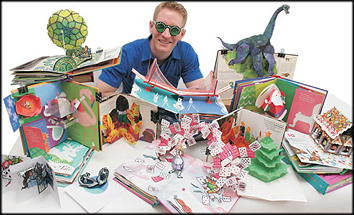
1965 – Robert Sabuda is a leading children's pop-up book artist and paper engineer. His recent books, such as those describing the stories of The Wonderful Wizard of Oz and Alice in Wonderland, have been well received and critically acclaimed.
Sabuda was born in Wyandotte, Michigan and raised in Pinckney, Michigan. He was skilled as an artist from a very young age, and attended the Pratt Institute in New York City. His specific interest in 3-D paper engineering (i.e., pop-up books) was sparked by a book he received that was illustrated by Vojtěch Kubašta. His interest in children's book illustration began with an internship at Dial Books for Young Readers while attending the Pratt Institute. Initially working as a package designer, he illustrated his first children's book series, of "Bulky Board Books", in 1987. Wide recognition only came his way after he started designing pop-up books for children in 1994.
Robert Sabuda kicked off the pop-up renaissance in 1996 with Christmas Alphabet, a series of elegantly constructed pop-up images that scaled the New York Times bestseller list, despite its then-staggering price tag of $19.99.
Matthew Reinhart began working alongside him and creating his own work when the two became a couple, in 1997. Now, working from their Tribeca studio with four assistants, Robert and Matthew start from scratch with each new book, crafting elaborate, intricately colored structures that leap from the pages, then sending the books off to be hand-assembled overseas.
youtube
Robert and Matthew discuss their art


1970 – In the early morning hours, New York City police raid a gay bar called the Snake Pit for not having a license for dancing and selling alcohol, arresting 167 patrons. At the police station, one of the arrestees, an Argentine national named Diego Vinales so feared the possibility of deportation that he leapt from a second-story window of the police station, impaling himself on the spikes of an iron fence. He survived, though firemen were forced to cut out a section of the fence with Vinales still skewered on it, in order to move him to the hospital.
One journalist remarked, “It is no crime to be 'in' a place that is serving liquor illegally, the only crime is to run such a place. There were no grounds for hauling the customers away.”
Though charges against other patrons were dropped, Vinales was rebooked for "resisting arrest" and officers were stationed outside his hospital room to prevent another escape. The community organized a protest march.


1987 – Devon Graye Fleming, known professionally as Devon Graye, is an American actor and filmmaker. He is best known for portraying teenage Dexter in the TV series Dexter, as well as the second Trickster in The Flash. In 2019, he wrote the thriller film I See You.
Graye was born in Mountain View, California. He studied acting at the American Conservatory Theater in San Francisco. Although Graye is American, he lived in the United Kingdom for all four years of high school.
Graye wrote a thriller screenplay titled Allison Adams, which was featured on the 2016 Black List for most popular unproduced screenplays.
He has been dating Canadian actor Jordan Gavaris since September 2013.




21 notes
·
View notes
Text
Interview with Josip
By:FCB
Servus, Josip! You're currently in Tokyo on the Audi Summer Tour. What impressions have you already been able to gather?
It's the first time I've been to Asia, so it's very special. Tokyo is incredibly impressive. You immediately notice how clean the city is - and the people here are very polite. I was walking around the city with Leroy and Jamal on Thursday afternoon. People kept recognising us, greeting us and wanting to take selfies. Everyone was super friendly. To be able to experience the culture here like this is very nice

Is there anything you're particularly looking forward to in the coming days?
After the game against Manchester City, I'm also very excited about the upcoming games. The Liverpool match will be a very good comparison for us. In general, we want to take the next steps here in preparation for the new season. I'm also really looking forward to Singapore. That will certainly be another new experience
You're the only native of Munich in the senior squad - what does it mean to you to play for FC Bayern?
For me, it's the fulfilment of a childhood dream. I've been a Bayern fan ever since I can remember - my father's influence on me (smiles). The fact that I've made it here is a huge thing and certainly wasn't always necessarily foreseeable
As you allude to, your career path has been a somewhat unconventional one. You played for Fürstenfeldbruck until just before your 17th birthday. Did you still dream of a career as a professional footballer back then?
The dream is always alive, of course. In my youth, there were a few times when I thought about going to FC Bayern. At first, however, I stayed at TSV 1860 because I thought I had more of a chance of making it there. Then, in the U15s, I was lagging behind a bit physically, and when it was clear that I wasn't going to stay at 1860, I went to Fürstenfeldbruck because my best mate played there. I just wanted to play football, but I never stopped believing in it
Then the move to FC Bayern happened after all...
In the U17s we played against Unterhaching with Fürstenfeldbruck, and I scored a goal and delivered an assist in a 2-2 draw. After that, I was invited to try out for Bayern - I was overjoyed. After two or three months of training with the team, the transfer worked out
You then established yourself in the FCB youth team. Is there a moment you look back on with particular fondness?
One special moment was of course the third division championship with the reserves. Nobody expected that and it was something very special. All that experience in the third division helped me a lot in my development.
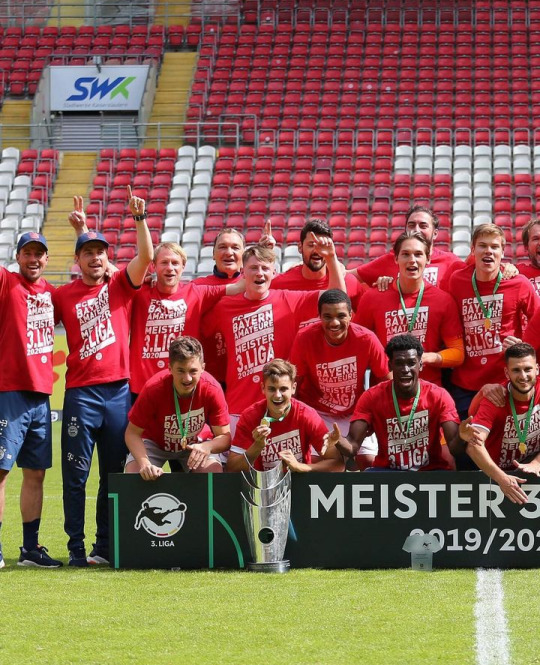

Your professional debut, your first championship, your first competitive goal - a lot has happened in the past two years...
Two years ago, I would never have thought I would experience so much in this amount of time. Of course, there are always ups and downs, including some injuries I suffered. But all in all, the past few years have been extremely positive. I also played my first few games for the Croatian national team. A few months previously, I would never have dreamt that I would play for the national team, because at that time I was still playing for the reserves.
How did you find out about your first call-up to the national team?
When I took the call from the Croatian football federation, I was in the car with my parents and my sister. My mobile phone was connected to the car and everyone was able to listen in. They told me that I would be invited to play for the senior national team. I was perplexed at first, then I looked to my right. My parents started crying, my sister was crying - it was a very emotional moment and I was very happy my family were able to experience it first-hand with me

What role has your family played in your career?
They brought me to where I am now. My parents took on all sorts of hardships. My mother, no matter what happened, was always there for me and took care of everything. My father has always really pushed me. They've had a huge impact on me
At the World Cup last winter, you reached the semi-finals with Croatia - what did you take away from the tournament?
It was a huge experience. To come third with a small country like Croatia is just amazing. I've experienced an enormous amount of positive things in the past two years, many things I would never have dreamed of in my life
Many of your contemporaries particularly appreciate that you're hard-working. How would you characterise yourself?
Hard-working and ambitious is a good description. Of course I'm happy when others see it that way too. You can't make it in professional football without these two components, unless you're a huge talent. That wasn't necessarily the case with me and that's why I had to utilise other attributes
You're heading into your third season as a professional footballer with FC Bayern. What have you set yourself?
We want to win titles. In the past few years, the way we've been knocked out of the DFB Cup and the Champions League has always been extremely annoying. Personally, I want to stay injury-free. It's important, especially in my position, that if someone drops out, I'm ready to take my chance. My goal is to play as many games as possible. I know there's a lot of competition at Bayern. That's why you should never take it for granted when you play. I'm going in with the mindset that I'm ready when the coach needs me and that I'll make it as difficult as possible for him to do without me

10 notes
·
View notes
Text
walking around munich and only seeing tsv tags and man city ads. life is so sad
3 notes
·
View notes
Photo
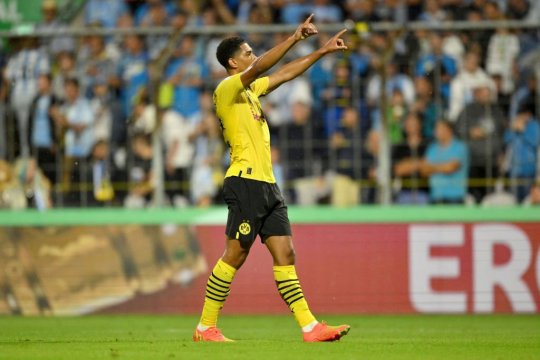
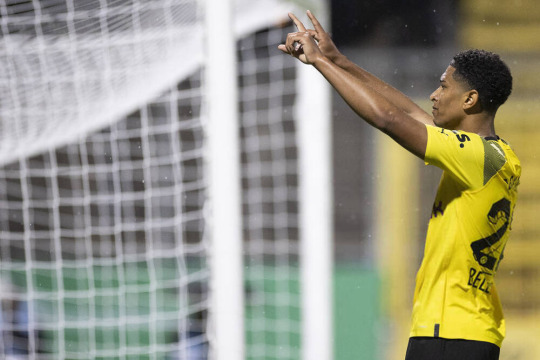
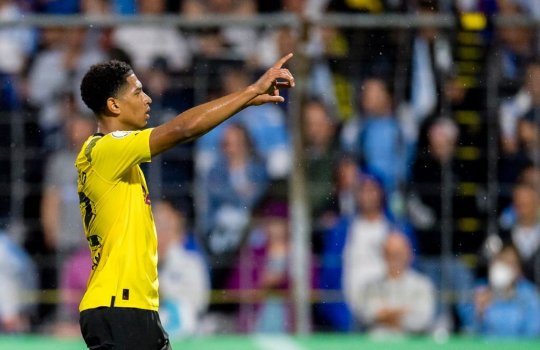
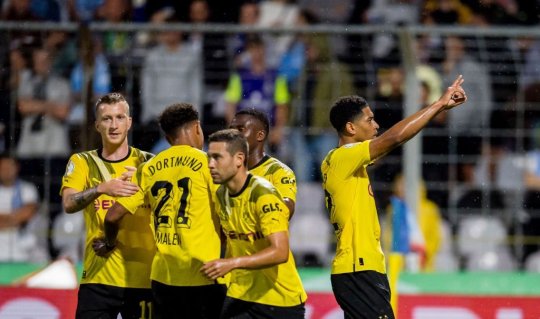

DFB Pokal first round, season 2022/23:
Jude Bellingham celebrates his goal against TSV 1860 München at Stadion an der Gruenwalder Straße on July 29, 2022 in Munich, Germany.
12 notes
·
View notes
Text
Sport Venue & Event Management Entry 1
Design innovation of a sports venue
An example of design innovation of a sports venue is Allianz Arena in Munich, Germany. The stadium construction began in October 2002 after a stadium build referendum was held in Bavaria that a majority 65% of people voted in favour of (Allianz Arena, 2024). Completed in April of 2005, Allianz Arena initially had joint ownership with FC Bayern Munich and TSV Munich 1860 having a 50% ownership share each. The state-of-the-art stadium build cost $340 million euros and was designed by Swiss Architects Herzog and de Meuron together with the support of Alpine Bau and Hypo-Verinsbank (HVB). Kucukvar et al. (2021) state design innovation is now allowing venues such as the modular shipping container stadium to be built, dismantled, relocated and reused. A feature of the stadium is the exterior cladding that is made up of 2874 translucent diamond metal panels of ETFE (ethylene-tetrafluoroethylene copolymer) (Rethinking The Future, 2022).
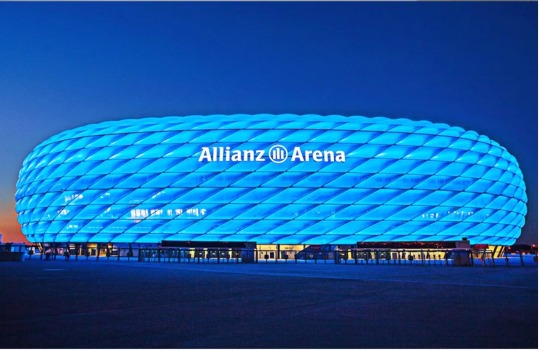
These panels can be illuminated in red, white or blue. Red and blue for Munich’s two biggest football teams FC Bayern Munich and TSV 1860 Munich and white for the German national team. Allianz Arena is an example of Parametric Architecture with panels that fit together geometrically and help make the stadium visually appealing during the day and at night with Allianz Arena standing out in Munich. Bianconi et al. (2020) explain that the rapid evolution of visual optimization in stadium design has brought two Italian architects’ and mathematicians’ vision of Parametric Architecture to reality over recent decades.

Another feature of Allianz Arena is the roof membranes are 1/30th of the weight of glass while being self-cleansing and ventilated. These features are made from suitable materials and their properties make maintenance and cleaning easier. Allianz Arena has an impressive capacity of 75,024 seats and can accommodate 13,342 in standing areas. Functionality is included with the design of Allianz Arena having a press club area for the media with 350 seats. It also has hospitality aspects covered with 6000m2 of catering facilities that include a bistro that can accommodate 400 people, along with a fan restaurant at either end of the stadium that holds 1000 people each.
In mid-2024 Germany hosts the 17th UEFA European Championship, EURO 2024, with Allianz Arena hosting a handful of games including the opener (Okello, 2024). Allianz Arena has recently undergone renovations in preparation for the event with the latest 5G mobile technology installed allowing blanket coverage in and around the stadium. This giving the fans and media the greatest level of connectivity. Yang and Cole (2020) discuss the advent of smart stadiums and innovation in stadium design adapting to the hyper-digitalisation of sport with the way the attendee can engage with the sport using mobile phones that use the updated stadium networks.

References
Allianz Arena. (2024). Arena. Facts. General Information. https://allianz-arena.com/en/arena/facts/general-information
Behance. (2014). Allianz Arena Parametric Model Study [screenshot]. https://www.behance.net/gallery/21355095/Allianz-Arena-Parametric-Model-Study
Bianconi, F., Filippucci, M., Buffi, A., & Vitali, L. (2020). Morphological and visual optimization in stadium design: a digital reinterpretation of Luigi Moretti's stadiums. Architectural Science Review, 63(2), 194-209. https://doi.org/10.1080/00038628.2019.1686341
Kucukvar, M., Kutty, A. A., Al-Hamrani, A., Kim, D., Nofal, N., Onat, N. C., Ermolaeva, P., Al-Ansari, T., Al-Thani, S. K., Al-Jurf, N. M., Bulu, M., & Al-Nahhal, W. (2021). How circular design can contribute to social sustainability and legacy of the FIFA World Cup Qatar 2022™? The case of innovative shipping container stadium. Environmental Impact Assessment Review, 91, 106665. https://doi.org/10.1016/j.eiar.2021.106665
Okello, S. (2024, April 24). Euro 2024 final stadium: Which city is host? Football Ground Guide. https://footballgroundguide.com/news/euro-2024-final-stadium-host-city
Rethinking The Future. (2022). 10 Innovative football stadiums around the world. Designing for Typologies. https://www.re-thinkingthefuture.com/designing-for-typologies/a3309-10-innovative-football-stadiums-around-the-world/#bdde3b6945a570b82487c154e3e68b566ee3e087#207680
X. (2020). FC Bayern Munich. Allianz Arena >>>>>> [screenshot]. https://x.com/FCBayernEN/status/1304051862488985600
Yang, C., & Cole, C. L. (2022). Smart Stadium as a Laboratory of Innovation: Technology, Sport, and Datafied Normalization of the Fans. Communication & Sport, 10(2), 374-389. https://doi.org/10.1177/2167479520943579
0 notes
Text
Franz Beckenbauer, astro del fútbol alemán, fue campeón mundial como jugador y entrenador. Falleció a los 78 años luego de padecer una enfermedad que lo mantuvo alejado de la vida pública. Celebró como capitán del equipo en 1974 y se consagró en Italia 90 como DT tras vencer a la Argentina de Maradona y Bilardo
Franz Beckenbauer murió a los 78 años (Reuters/Carl Recine/File Photo)
Sergio Levinsky
Una noticia generó conmoción en el mundo del mundo. Franz Beckenbauer, la leyenda de Alemania que supo ser campeón del mundo como jugador y capitán en 1974 y que luego lideró al combinado de su país a ganar la Copa del Mundo en Italia 90 como entrenador, falleció a los 78 años de edad.
Cuando se hace referencia al puesto de líbero en el fútbol, necesariamente hay que remitirse a quien lo inventó y lo llevó a cabo con perfección. Considerado uno de los mejores de todos los tiempos, y uno de los tres únicos de la historia en ganar el título mundial como futbolista y como director técnico, como parte de una gloriosa carrera que incluyó el lanzamiento del Bayern Munich como potencia europea en los años 70.
Franz Anton Beckenbauer fue apodado como “El Kaiser” (emperador, en alemán) por su elegante estilo de salida con pelota dominada y porque formó parte de una época imperial del fútbol de su país. Con la selección alemana fue campeón de Europa (1972) y del Mundial (1974), y con el Bayern Munich obtuvo una Recopa de Europa, tres Copas de Europa (lo que hoy es la Champions League), una Copa Intercontinental, cuatro Bundesligas y cuatro Copas alemanas.
Llegó a ser Balón de Oro de Europa en 1972 y 1976 y se encuentra tercero en el ranking como el mejor futbolista del siglo XX por la Internacional de Historia y Estadísticas de Fútbol (IFFHS), así como en diciembre de 1993 fue electo como segundo mejor futbolista de la historia de las Copas del Mundo, en una votación con más de mil periodistas. Actualmente era presidente honorario del Bayern, el club que marcó su vida.
Te puede interesar:Lewis Hamilton pasó fin de año en Brasil y una foto con una modelo durante una fiesta disparó los rumores de romance
Se crió en la región de la Bavaria de la postguerra. La Segunda Guerra Mundial recién terminada cuando nació, el 11 de setiembre de 1945. Tuvo que vivir la primera etapa de la reconstrucción y la dura autocrítica que comenzó a aparecer en buena parte de su país. Con el tiempo, Beckenbauer explicó cuáles fueron los ingredientes de su excepcional carrera: “Para ser exitoso como jugador, entrenador y dirigente hay que tener mucha disciplina, bastante suerte, y nacer en el país y en el momento justo”.
Franz Beckenbauer se consagró campeón del mundo como jugador en el Mundial de 1974
Tuvo otra notable influencia desde lo deportivo: ver como niño, a sus nueve años, cómo Alemania se consagraba campeona del mundo por primera vez, en Suiza, remontando el mítico partido a los húngaros 3-2 con Fritz Walter como capitán, y se propuso imitar aquella hazaña y lo consiguió justo veinte años después. Tanto le influyó aquel logro que ya mucho después, cuando pudo ver la película “El Milagro de Berna”, de Sonke Wortmann, en 2003, contó que aunque ya había dejado de jugar, sintió el mismo impulso y los mismos deseos que cuando era un niño y ni soñaba con que algún día le dirían “El Kaiser”.
Te puede interesar:Una estrella del Manchester City reveló que su familia sufrió un millonario robo en su mansión: “No puedo explicar lo devastado que estoy”
Su debut se produjo en el TSV Munich 1860 (del que es hincha) y a los catorce años lo fichó el Bayern, el otro equipo de la ciudad, que por entonces no se destacaba demasiado en Europa. Debutó en la Liga Alemana en 1964 y en la selección en 1965, con veinte años, y siendo fundamental en un partido crucial de eliminatorias ante Suecia, que Alemania ganó 2-1.
Brilló especialmente en el Mundial de Inglaterra 1966, marcando cuatro goles (tanto contra Uruguay como contra Rusia, ambos equipos se quedaron
con 9 jugadores, él marcó en los dos y especialmente un golazo a Lev Yashin, desde fuera del área) y obtuvo el subcampeonato. De todos modos, su desilusión por aquella final (en la que le tocó marcar a Bobby Charlton) tan irregular ante los locales le dejó un gran rencor y nunca le perdonó al árbitro suizo Gottfried Dienst el haber cobrado aquel gol fantasma de Geoff Hurst, autor de dos más (el partido terminó 4-2). De todos modos, con los años dijo que “Inglaterra nos ganó esa final porque Charlton era un poco mejor que yo”.
Fue en ese Mundial de Inglaterra en el que sorprendió jugando en una nueva posición, como líbero, al punto de considerárselo como el inventor de esa posición. Aunque era un destacado y elegante volante central (si bien comenzó como extremo izquierdo y luego bajó en el campo para jugar de volante izquierdo), aparecía ahora colocado por detrás de la línea defensiva de su quipo, barriendo con los ataques rivales.
El papel de líbero aparecía como una plataforma perfecta de lanzamiento hacia el ataque porque jamás nadie pensaba en marcarlo y como jugaba atrás de los defensores, tenía tiempo para pensar bien cuándo proyectarse y hacerlo en absoluta sorpresa con calculados slaloms. Esto lo había visto en el lateral italiano Giacinto Facchetti, que se proyectaba de la misma forma por su banda, aunque chocaba mucho con el DT Helmut Schoen, que era mucho más cauteloso.
Tenía capacidad de mando, corte en las dos bandas, y gran poder de anticipación. Con salida exquisita con la pelota, sabía reventarla a la tribuna si hacía falta. Cruyff, uno de sus grades adversarios, dijo sobre él “para mí, el fútbol es mucho más que defender. Y Beckenbauer era un jugador ofensivo que hacía de defensor”.
Al regresar a Alemania como una estrella, el Bayern comenzó a cimentar la potencia que sería en los años 70. Volvió a destacarse en el Mundial de México 1970, especialmente en el mítico partido semifinal ante Italia (3-4) cuando jugó una parte con el brazo en cabestrillo (tenía un hombro dislocado) y al final, el equipo fue tercero al vencer a Uruguay.
Beckenbauer ya era el capitán, tomando la posta dejada por el “tanque” Uwe Seeler. Además, México le permitió vengarse de aquella final perdida ante los ingleses, cuando Alemania los eliminó en cuartos de final tras estar perdiendo 2-0 con goles de Allan Mullery y Martin Peters, pero el historiador Brian Gianville comentó en su libro “La historia de la Copa del Mundo”, lo que ocurrió después: “Beckenbauer avanzó, recogió un rebote y sacó un tiro bajo, de derecha, hacia el rincón izquierdo. Peter Bonetti (quien reemplazó al lesionado Gordon Banks), llegó demasiado tarde a la pelota y fue el 2-1. Fue el inicio de una pesadilla para el arquero, sumado al error del DT Alf Ramsey de quitar de la cancha a Bobby Charlton para reservarlo para la semifinal y eso permitió que Beckenbauer se adelantara mucho más en el campo, ya sin obligación de marca, y terminó empatando Seeler, y Gerd Müller sentenció en el tiempo extra”.
Su fama se había convertido en Mundial y en la Argentina se cantaba en las canchas “En Alemania, Beckenbauer, en Brasil, el Rey Pelé y aquí en la Argentina, Boca Juniors y su ballet” (cada uno colocaba allí el nombre de su equipo).
Beckenbauer lideró a Alemania a ganar el Mundial Italia 90 tras vencer en la final a la Argentina de Carlos Bilardo (Action Images/File Photo)
“México 70 fue un torneo excepcional. En aquella época no había tanto fanatismo ni tanta preocupación por la seguridad. Podíamos hacer lo que queríamos. Simplemente había un policía armado como única vigilancia, algo impensable en la actualidad. Entonces, todo era más relajado y el torneo estuvo lleno de colorido. El país era una gran fiesta de fútbol”, recordó con nostalgia pero influyó mucho en su manera de ver el fútbol porque cuatro años después, en el Mundial como local, se quejó de las concentraciones rigurosas. Todo había cambiado.
En 1972 comenzó la era dorada del fútbol alemán, ganando la Eurocopa
72, en donde tuvo una brillante actuación, especialmente en la semifinal ante Bélgica (2-1) y en el contundente 3-0 de la final ante la URSS, quedando en el equipo ideal del torneo. También entre 1972 y 1974 ganó las tres Bundesligas, y entre el 74 y 76, las tres Copas de Europa (ante el Atlético Madrid, el Leeds, y el Saint Etienne), en una década de gran duelo con el fútbol holandés, tanto en la final del Mundial 1974, una transición casi perfecta, como que entre 1971 y 1973, el Ajax había sido tricampeón de Europa con Cruyff, Neeskeens, Kaizer y compañía.
También Alemania fue subcampeona en la Eurocopa de 1976. Esos años fueron los que inspiraron al ex goleador inglés Gary Lineker a decir que el fútbol “es un deporte que inventamos los ingleses, juegan once contra once y siempre gana Alemania”. La base del Mundial 1974 le dio la amistad con varios de sus integrantes que luego tendrían que ver con el Bayern como Paul Breitner, Gerd Müller, Sepp Maier, Uli Hoeness y Jupp Heinckes.
En 1977, tras 14 años en el Bayern, se fue a jugar al Cosmos de Nueva York, que pagó por su fichaje 2.800.000 dólares, junto con Pelé, Giorgio Chinaglia y Carlos Alberto Torres, cuando la Warner Communications y otras empresas invirtieron millones para organizar la NASL . Allí jugó hasta 1980 (ganó tres ligas y llegó a enfrentar a Diego Maradona Maradona en un amistoso bajo una llovia torrencial en la cancha de Vélez), y regresó, ya veterano, al Hamburgo hasta 1982 (ganó una Bundesliga) y volvió a los Estados Unidos para terminar su carrera en el Cosmos en 1983. Ese año, se retiró del fútbol tras recibir un fuerte golpe en los riñones que lo obligó a dejar los campos de juego. En un total de 670 partidos, marcó 93 goles en su carrera.
Así se transformó en entrenador y lo primero que dirigió, sin ninguna experiencia previa, fue a la selección alemana, en la que asumió en 1984 (ese año jugó contra Argentina un amistoso, 1-3) en reemplazo de Jupp Derwall. Ese sería su primer enfrentamiento ante su colega Carlos Bilardo, con quien más adelante haría una amistad, y con quien se enfrentaría en dos finales consecutivas de Mundiales.
Tras perder la final del Mundial de México 1986 ante Argentina (2-3), en Italia 1990 se tomó revancha luego del triunfo del seleccionado alemán en la final contra la Albiceleste que tenía a Diego Maradona gracias al tanto de penal de Andreas Brehme, de penal, cuando restaban cinco minutos para el final del partido. De esta manera, Beckenbauer logró alcanzar al brasileño Mario Lobo Zagallo como campeón mundial tanto como jugador como DT. más tarde, también el francés Didier Deschamps lo conseguiría en Rusia 2018).
Maradona contra la Alemania de Franz Beckenbauer en el partido final de la Copa del Mundo 1990
Después de Italia 90 tuvo un breve y poco exitoso paso por el Olympique de Marsella (el equipo del dueño de la empresa, Bernard Tapie, lo fichó justo cuando Beckenbauer había firmado un contrato con esa empresa por diez años) pero fue reemplazado por el belga Raymond Goethals, aunque permaneció como director deportivo hasta finalizar la temporada 1990/91.
En octubre de 1991 volvió al Bayern junto con otra figura del club, Karl Heinz Rummenigge. Primero fue consejero, pero desde noviembre, se convirtió en vicepresidente. En diciembre de 1993 se hizo cargo de la dirección técnica ante una de las crisis del equipo y duró hasta junio. El equipo remontó posiciones y ganó la Liga 1993/94. En noviembre de 1994, como candidato único a la presidencia del club, la Asamblea le dio el mandato por tres años aunque en abril de 1996 se volvió a hacer cargo del equipo y ganó la Copa UEFA. En noviembre de 1997 renovó su mandato como presidente, siempre acompañado de Rummenigge como vice.
En 1999, su carrera como dirigente tuvo un giro inesperado porque si bien siguió ligado al Bayern, se hizo cargo del Comité Organizador del Mundial 2006 y al ser elegida Alemania como sede en 2000, a partir de 2003 cedió la presidencia del club a Rummenigge, y él conservó una presidencia más diplomática.
Mientras fue presidente del Bayern, el equipo ganó seis Bundesligas, una Champions (2001), una Copa Intercontinental (2001, ante Boca) y la Copa de la UEFA 1996, además de perder sobre la hora la Champions 1999 en Barcelona contra el Manchester United.
En 2009 abandonó la presidencia del Bayern, dejándola en manos de Uli Hoeness y pasó a ser vicepresidente de la Federación Alemana (DFB) y posteriormente, “presidente de honor” del Bayern y “miembro de honor” de la DFB.
En una entrevista otorgada en 1977 a la revista “Stern”, admitió haberse dopado con sangre: “Tengo un particular método para mantenerme en el más alto nivel: inyectarme mi propia sangre. Unas cuantas veces al mes, mi amigo Manfred Köhnlechner me hace una extracción de sangre de un brazo para inyectármela luego en la nalga. Esto causa una inflamación artificial, lo que eleva los glóbulos rojos y blancos, y el rendimiento general del organismo”. En ese momento, esta práctica no era usual en el deporte. Recién en 2013 se publicó un informe de dopíng sistemático de atletas en Alemania Federal en las décadas del 50 y 60 y señala que tres jugadores “sin identificar” de la selección alemana dieron positivo por efedrina tras el Mundial 1966, aunque en un debate en la TV estatal ZDF, Beckenbauer afirmó que nunca ingirió nada sin saber lo que era pero a la vez sostuvo que el equipo médico les suministraba inyecciones de vitaminas de las que no conocía más detalles.
A principios de julio del 2019 tuvo un infarto ocular durante la ceremonia de apertura del torneo de golf que organiza cada año. Lo dejó casi sin vista y lo contó en principio a modo jocoso. Fue justo cuando la Fiscalía suiza lo está investigando por unos pagos previos al Mundial 2006 como presidente del Comité Organizador. Beckenbauer esgrimió entonces un certificado médico por el que “de ninguna manera” está en condiciones de someterse a cuestionarios o negociaciones.
De cualquier manera, se lo juzgaría en ausencia por el pago de sobornos para obtener la sede del 2006. Se lo investigó desde 2015 junto a otros tres altos dirigentes de la DFB acusados de fraude fiscal, malversación de fondos, lavado de dinero y apropiación indebida. Uno de esos dirigentes es Theo Zwanziger, ex presidente de la DFB.
El Káiser junto al balón que se utilizó en el Mundial 2006 que se disputó en Alemania (REUTERS/Tobias Schwarz/File Photo)
Se dijo también que ese dinero fue para pagar coimas para el voto de cuatro delegados asiáticos para que votaran por Alemania para el 2006. Esta publicación de la revista “Der Spiegel” en 2015, le costó el cargo al presidente de la DFB, Wolfgang Niersbach y obligó a la entidad alemana a una investigación propia. Descubrieron que entre mayo y julio de 2002 salieron cuatro pagos que totalizaron 6,7 millones de euros desde una cuenta suiza a nombre de Beckenbauer a una oficina de abogados de la localidad suiza de Sarnes, aunque el destino final fue el holding KEMCO en Qatar, administrado por el ex dirigente de la FIFA y suspendido de por vida, Mohammed Bin Hammam.
Esa misma oficina en Sarnes recibió en agosto de 2002, 10 millones de francos suizos por parte del ex jefe de Adidas Robert Louis Dreyfus. Esa oficina de Sarnes envió entonces 6 millones a la cuenta a nombre de Beckenbauer y los otros 4, a la cuenta de KEMCO en Qatar. Esto desató el interés de la Fiscalía suiza y “Der Spiegel” comenzó a referirse a una caja negra del Comité Organizador 2006 que era alimentada por Dreyfus y Adidas porque ese dinero negro nunca fue registrado por el Comité y no se sabe qué ocurrió con él. En 2000, Alemania fue elegida sede del 2006 por 12-11contra la candidatura de Sudáfrica, cuando sorpresivamente se ausentó de la sala de votación el neocelandés Charles Dempsey.
Desde que estalló ese escándalo, Beckenbauer se recluyó en su mansión de Austria, canceló todos los encuentros públicos y sólo concedió una entrevista al periódico Suddeustche Zeitung, al que negó haber estado involucrado en sobornos y dijo que “yo firmaba todos los documentos que me llegaban sin mirar. Nunca cometí un delito”.
Pese a todo lo que ganó en su carrera con la selección alemana, Beckenbauer llegó a decirle al por entonces DT del combinado europeo Joachim Löw que “siempre tuvimos jugadores de calidad pero tú tienes el mejor equipo alemán de todos los tiempos, tienes 23 jugadores al máximo nivel, algo que no tuvimos nunca”, en una entrevista a ambos en la revista “Bild am Sonntag”. Low le había pedido a Beckenbauer que por favor no dijera que Alemania tendría un equipo invencible por muchos años, como afirmó cuando ganó el Mundial 1990, lo que terminó siendo un estigma para su sucesor y amigo Berti Vogts. “Es algo que Bertie todavía no me perdonó”, reconoció el Kaiser, con ironía.
En su vida tuvo cinco hijos: Stefan (fallecido a los 46 años por un tumor cerebral, ex DT de la cantera del Bayern, descubridor de Bastian Schweisteiger y Thomas Muller), Thomas, Michael (de su primer matrimonio), Noel y Francesca. Se casó en tres ocasiones y su última unión matrimonial fue con Heidi en 2006. También hay que mencionar que tuvo un hijo extra matrimonial a los 55 años con su por entonces secretaria al que reconoció llamado Johann. “He hablado con mi esposa al respecto. Por supuesto, la situación no era fácil, pero hemos acordado que seguimos juntos. Nuestro matrimonio es fuerte y seguiremos como hasta ahora”, explicó en su momento.
Jugador elegante, siempre parecía que andaba en puntas de pie, y mayor símbolo del Bayern, un equipo que dio cracks como Sepp Maier, Gerd Müller, Karl Rummenigge, Lothar Matthaus, Michel Ballack u Oliver Kahn, muchos aficionados piden que el estadio actual del Bayern, el Allianz Arena, lleve su nombre. Ahora, con su muerte, habrá qué ver cuáles serán los tributos que llegarán para celebrar la vida de una de las grandes leyendas del fútbol de todos los tiempos.
Beckenbauer, campeón del mundo como jugador y entrenador
Seguir leyendo
Para recibir en tu celular esta y otras informaciones, únete a nuestras redes sociales, síguenos en Instagram, Twitter y Facebook como @DiarioElPepazo
El Pepazo/Infobae
1 note
·
View note
Photo

The Allianz Arena is a football stadium in the north of Munich, Germany. Home of two professional Munich football clubs Bayer Munich and TSV 1860 Munchen it is the first stadium in the world that has...
0 notes
Text
The Allianz Arena is a football stadium in the north of Munich, Germany. Home of two professional Munich football clubs Bayer Munich and TSV 1860 Munchen it is the first stadium in the world that has…

1 note
·
View note
Photo
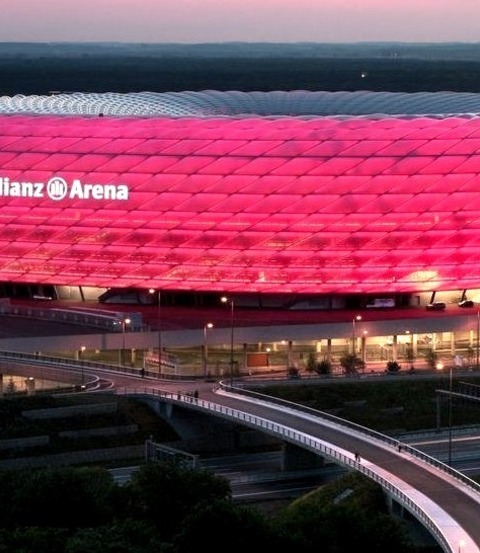
The Allianz Arena is a football stadium in the north of Munich, Germany. Home of two professional Munich football clubs Bayer Munich and TSV 1860 Munchen it is the first stadium in the world that has...
0 notes
Text
The Allianz Arena is a football stadium in the north of Munich, Germany. Home of two professional Munich football clubs Bayer Munich and TSV 1860 Munchen it is the first stadium in the world that has…

0 notes
Text
The Allianz Arena is a football stadium in the north of Munich, Germany. Home of two professional Munich football clubs Bayer Munich and TSV 1860 Munchen it is the first stadium in the world that has...
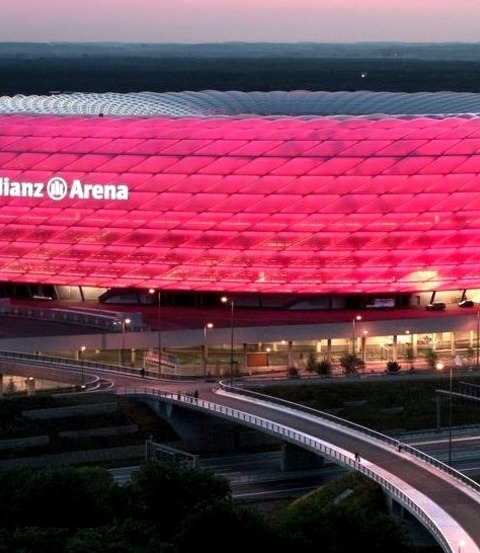
1 note
·
View note
Photo
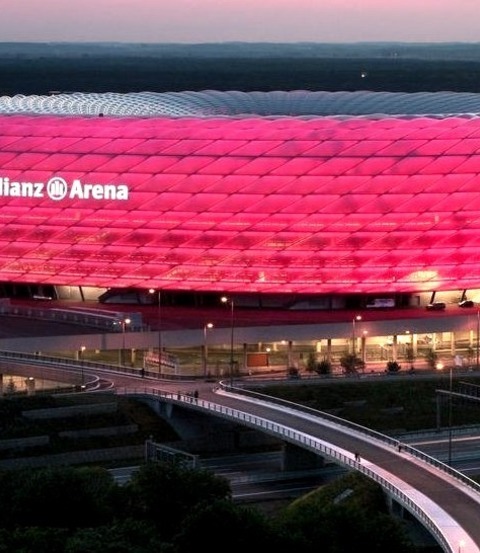
The Allianz Arena is a football stadium in the north of Munich, Germany. Home of two professional Munich football clubs Bayer Munich and TSV 1860 Munchen it is the first stadium in the world that has...
1 note
·
View note
Note
Na, zufrieden mit der Pokalauslosung?
oop had to google translate this one! haha
tbh, i'm not familiar with the lower division clubs so i don't think i have any opinions or views about this draw. but seeing bvb paired up with a mainz club gave me war flashbacks 😵💫 anyways if i read correctly, tsv schott mainz is in the fifth-tier german football league. and bayern munich was drawn up against sc preußen münster, which was just promoted to the third-tier. so i suppose bayern will be facing a slightly tougher opponent compared to bvb?? the rbs won last time around so i'm hoping they will be dethroned sksk 🤭
#i was wondering if this was sent by accident hshs as i've never really posted much about dfb pokal or anything haha#anon#asks#answered#ice talks#dfb pokal
0 notes